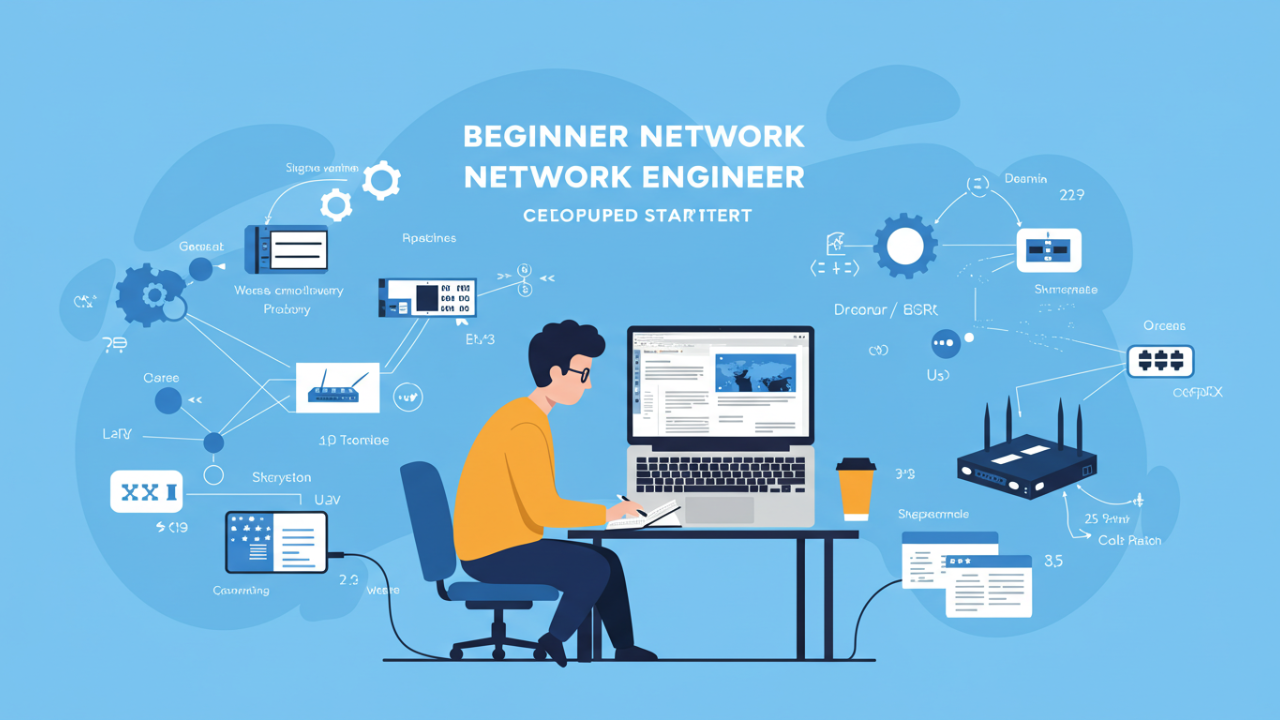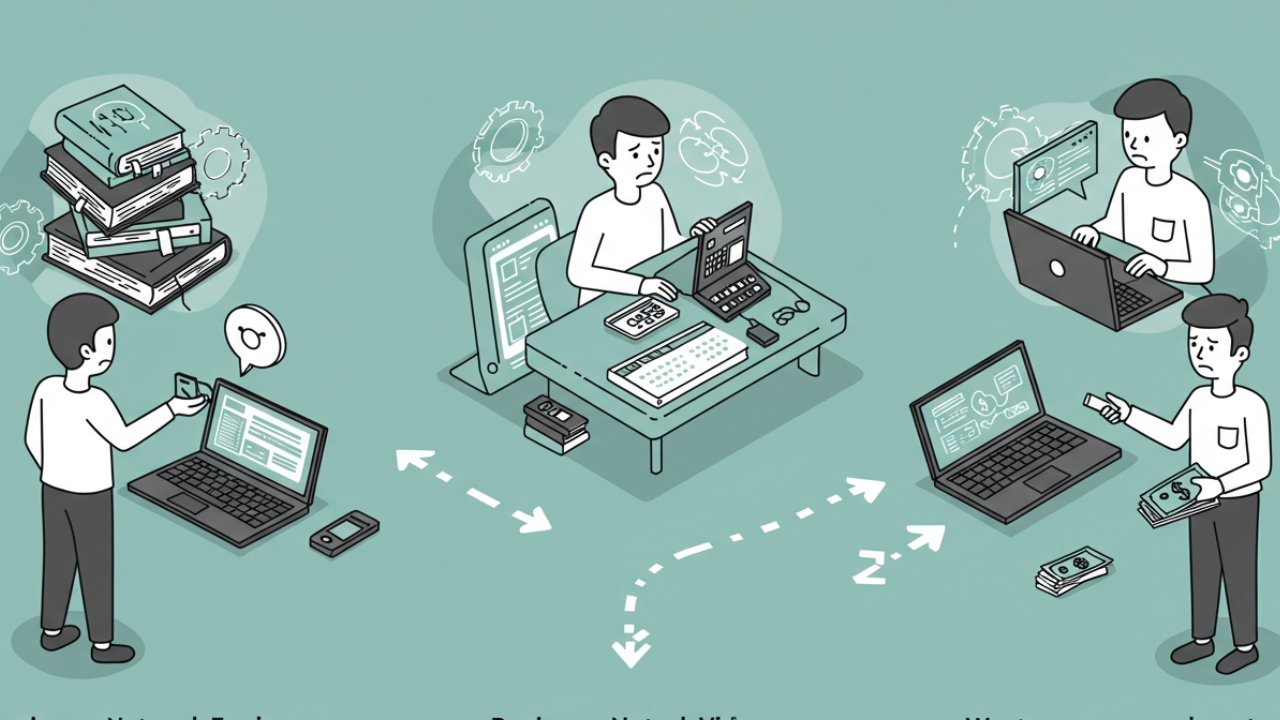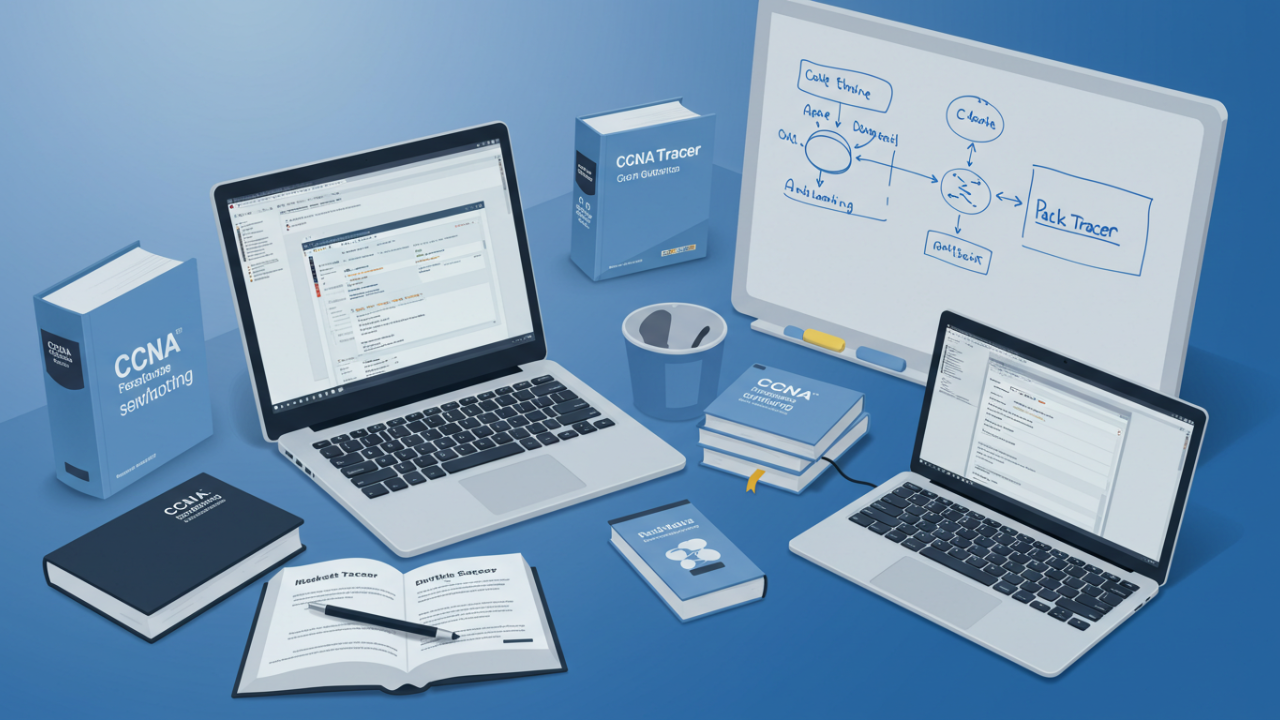Starting a career in network engineering feels exciting but overwhelming.
I remember sitting at my desk late at night, trying to figure out where to begin.
There were so many websites, books, and courses that I didn’t know which ones were truly worth my time.
If you’re in the same spot, don’t worry — you’re not alone. In this guide, I’ll share what I wish someone had told me when I started. We’ll walk through what network engineering really means, why it’s a great career choice, the exact skills you need, and where you can find the best study resources. Everything here is built to give you a strong, clear starting point.
What is Network Engineering?
Network engineering is the field that keeps people, businesses, and technology connected.
As a network engineer, you design, set up, and maintain systems that allow data to flow between devices smoothly and securely.
Without network engineers, hospitals couldn’t store patient records safely.
Banks couldn’t process transactions.
Schools couldn’t offer online classes.
Even video games and streaming services would struggle without strong network designs.
At its heart, network engineering is about building paths for information to travel — paths that must be fast, safe, and reliable every single day.
What Do Network Engineers Actually Do?
Each day as a network engineer brings new challenges.
You might spend a morning fixing a company’s slow Wi-Fi, an afternoon setting up security policies to block hackers, and an evening configuring routers for a new office branch.
Your role covers everything from designing the system on paper to making sure it works in real life.
Sometimes you’re deep in technical tasks like coding firewalls.
Other times, you’re explaining problems to a non-technical manager who just wants the internet back on.
That mix of hands-on work and communication is what makes network engineering so interesting to me — and why so many others love it too.
Why Network Engineering is a Great Career Choice
Choosing a career in networking gives you real advantages.
First, network engineers are in demand across every industry.
Healthcare, finance, education, and government all need networks to operate.
In the U.S., the average starting salary for network engineers is around $70,000 a year, and it can grow quickly with experience.
There are also many chances for remote work, especially as companies move more systems online.
Plus, networking is a strong foundation.
Once you learn it, you can branch into cybersecurity, cloud computing, or IT management later if you want more options.
In short, if you like technology and solving problems, network engineering can offer a steady, rewarding career path.
The Big Challenges Beginners Face (And How to Beat Them)
Problem 1: Too Much Information
When you search “how to learn networking,” the results can feel endless.
Videos, articles, books, certifications — it’s easy to feel lost.
The key is to focus.
Start with the basics and build slowly.
Ignore advanced topics like BGP route reflectors or cloud networking at the beginning.
You’ll get there in time.
Problem 2: No Hands-On Practice
Reading is important, but networking is something you learn by doing.
Without practice, facts stay stuck in your head without connecting to real skills.
Even if you don’t have fancy lab gear, you can use free simulation tools.
Building small labs at home or on your laptop makes a huge difference.
Fixing your own mistakes teaches you lessons no book can.
Problem 3: Wasting Money on the Wrong Courses
Many beginners buy expensive courses that are too advanced, too boring, or simply badly explained.
You don’t need to spend thousands of dollars at the start.
Plenty of free or low-cost resources can help you build a solid foundation without going broke.
Essential Networking Concepts Every Beginner Must Master
How Networks Really Work
At the most basic level, a network connects two or more devices so they can share information.
When you click a link, your computer sends a request across a network to a server, which sends the information back.
Understanding how data moves — from one device to another, across different layers of equipment — is your first major step.
The OSI Model and TCP/IP Stack
When you start studying, you’ll hear about the OSI model.
It’s a seven-layer model that shows how data travels through a network, from the cable in the wall to the app on your screen.
The TCP/IP model simplifies it into four layers but works almost the same way.
Knowing these models helps you find out where problems are when networks fail.
You don’t have to memorize every tiny detail right away.
Focus first on understanding what happens at each layer in simple terms.
IP Addressing and Subnetting
Every device on a network needs an address, like a home needs a street address.
An IP address tells data where to go.
Subnetting breaks a big network into smaller pieces, which makes it more efficient and secure.
Learning how IP addresses and subnets work will give you power to design smart, reliable networks.
Building Strong Study Habits From the Start
One mistake I made early was jumping between topics too fast.
It’s much better to build a simple, strong study plan.
Pick a Starting Certification
Two certifications are perfect for beginners:
-
CompTIA Network+: Good if you want a general IT career.
-
Cisco CCNA: Best if you want a pure network engineering path.
Pick one based on your goal, then stick to it.
Mix Theory With Hands-On Practice
After you study a topic like “How routers forward packets,” open up a lab and build a tiny router network.
Seeing it work cements the knowledge much faster.
Stay Consistent
Study a little every day if possible.
Even 30 minutes a day adds up fast over a few months.
Top Free Study Resources for Beginners
Free Online Courses
Cisco offers free networking courses that explain the basics clearly.
Sites like Coursera also let you “audit” classes from major universities without paying.
Pick one course at a time.
Finish it before jumping to the next.
Free Labs and Simulators
Cisco Packet Tracer is perfect for beginners.
It lets you build networks on your computer with zero risk.
You can experiment, make mistakes, and fix them without needing real hardware.
Later on, you can try more advanced tools like GNS3 when you want a challenge.
Free Practice Tests
Testing yourself helps you find weak spots.
Websites like ExamTopics offer free sample questions for certifications like CCNA and Network+.
Don’t worry if you miss questions at first — every mistake teaches you something.
Paid Resources Worth Your Money
If you have a small budget, investing in a few tools can really boost your learning.
Best Books
One book I recommend is “Computer Networking: A Top-Down Approach.”
It explains concepts step-by-step in a way that’s easy to follow.
Another great book for fast review before exams is “31 Days Before Your CCNA Exam.”
Best Lab Software
When you feel ready for tougher labs, tools like Boson NetSim offer realistic practice environments that behave just like real networks.
They cost money but save tons of setup time.
Setting Up Your First Lab (Without Spending Much)
At the beginning, virtual labs are all you need.
Cisco Packet Tracer can teach you nearly everything up to the CCNA level.
Once you get comfortable, you might want real hardware.
Used Cisco routers and switches are cheap on eBay.
With just a few hundred dollars, you can build a small lab that feels professional.
Start simple.
A basic network with two routers and two switches is enough to practice real-world skills.
Joining a Community to Grow Faster
Learning alone is possible but harder.
When you join online communities, you get advice, motivation, and solutions when you’re stuck.
Some of my favorite places:
-
Reddit’s r/ccna and r/networking
-
Discord servers for CCNA students
-
TechExams.net forums
Don’t be afraid to ask questions.
Every network expert today was once a beginner too.
Smart Study Techniques That Actually Work
Reading a book once isn’t enough.
You need active ways to remember information.
Try:
-
Quizzing yourself after each study session
-
Teaching concepts out loud like you’re explaining to a friend
-
Summarizing chapters in your own words
Mixing active learning with passive activities — like listening to networking podcasts while driving — keeps your brain engaged all day without feeling tired.
Mistakes That Can Slow You Down
One major mistake is trying to learn too much, too fast.
Pushing yourself through advanced topics like MPLS or BGP when you don’t even fully understand VLANs yet will only cause frustration.
Another mistake is focusing only on passing exams without understanding real-world networking.
Companies hire engineers, not people who can just pass multiple-choice tests.
Finally, don’t fall into the trap of thinking you need the perfect gear, perfect course, or perfect book before starting.
Starting today — even small — is always better than waiting.
Tracking Your Progress and Planning Ahead
Measuring your own growth keeps you motivated.
Set small weekly goals like:
-
Build a basic home network
-
Configure your first router
-
Pass a 50-question practice test
Each small victory builds momentum.
After you complete your first certification, you’ll have real proof of your skills — and more confidence to chase bigger goals.
My Opinion| You Can Build Your Future in Networking
Network engineering is a skill that can change your life.
It opens doors to high-paying jobs, remote work, and opportunities in industries around the world.
The path is not always fast or easy, but it’s 100% possible.
If you stay focused, practice often, and use the resources shared here, you can build a strong, rewarding career step-by-step.
Your journey starts now.
Let’s build it together — one cable, one router, and one small success at a time.

















Leave a Reply